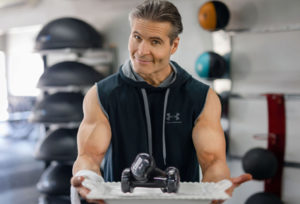“Oh My Achy Joints!”
For years, I struggled with joint pain, particularly in my back and knees. Once I turned forty, I began to notice discomfort in my hands and feet as well. This persistent issue lasted almost a decade. Despite trying numerous remedies, including stretching, chiropractic care, massage therapy, acupuncture, naturopathy, orthopedic and osteopathic consultations, physical therapy, and nutritional advice, I found little relief. Eventually, I discovered the key to my healing: it was all about my diet.
Initially, I focused on what I might be lacking in my diet, experimenting with various foods, supplements, and healing modalities like ultrasound, electrical stimulation, and cupping. Yet, my pain and stiffness always returned. It dawned on me that the solution lay not in what I could add to my routine, but rather in what I could remove.
Many of us don’t realize that foods we’ve consumed for years can suddenly disrupt our immune systems and create digestive issues. As we age, our ability to assimilate certain foods—like dairy, specific fats, and additives in food products—changes. Over time, our gut microbiome can weaken due to factors like antibiotic use, alcohol consumption, and medications like ibuprofen, which can be harsh on the digestive system. These factors lead to inflammation and leaky gut, causing proteins to enter the bloodstream and settle in our joints, often triggering a significant histamine response. Combine this with histamine-rich foods, and we have a recipe for discomfort.
I prided myself on eating a clean diet and never suspected that foods such as peppers, tomatoes, potatoes, eggplant, and even certain binders in supplements could be the culprits behind my creaky, stiff joints, which were showing signs of structural changes. My previous attempts at a bland elimination diet yielded minimal results, primarily because I didn’t stick with them long enough. It can take over 30 days for certain foods to fully clear the system before you start to feel relief. Additionally, some problematic foods may not trigger symptoms for 4 to 7 days, complicating the process of identifying the culprits.
For one month, I strictly consumed broccoli, chicken, basmati rice, and cauliflower, drinking only water. I felt fantastic! This led me to gradually reintroduce foods, one group at a time, categorized by their anti-nutrient content: nightshades, sulfur, nuts, gluten, dairy, sulfates, lectins, and GMOs.
I had previously eliminated nightshade vegetables, which can cause joint stiffness in some individuals, but only for brief periods. After a month, I cautiously reintroduced them and waited longer to monitor any reactions. Sure enough, about four days after consuming bell peppers, I woke up with severe back pain. The same reaction occurred with tomatoes, potatoes, eggplant, and even paprika seasoning. During my food trials, I also discovered I had a sulfur allergy to eggs and raw garlic and onions, as well as issues with lectins in beans and legumes, particularly lentils. These reactions included itchy skin, a runny nose, and significant joint stiffness, which stretching could only relieve temporarily. At times, my lower back felt like it was burning deep inside.
I learned that even small amounts of these problematic foods could trigger reactions. At a gathering, I picked out chopped tomatoes from a salad, thinking I could avoid any issues. However, even those tiny pieces led to misery after four days.
Many supplements also contributed to my problems, as numerous brands labeled “natural” contained the very foods I was allergic to. Additionally, the binders and fillers in most supplements can irritate sensitive individuals.
In my journey, I encountered Clint Paddison, who experienced similar symptoms and overcame them. His Ted Talk resonated deeply with my experience.
Now, thirteen years later, I have completely transformed my already healthy diet and feel fantastic. My joints have never felt better. I empathize with those suffering from back pain; I know how debilitating it can be. To maintain flexibility, I perform specific stretches each morning, targeting my back, hips, and legs to relieve pressure on my spine. It’s also essential to engage in light movement throughout the day to aid healing, as joints have a limited blood supply. During my recovery, I rode a stationary bike for five minutes at a low speed and resistance, three times a day. This gentle movement significantly helped heal my tendonitis. I also incorporated light twisting movements for my back to promote blood flow. Always remember to move within a pain-free range and at a slow pace. “Don’t move through the pain, move to the pain,” and remember: “motion is lotion for the joints.”
Healing the Joints: Nature’s Best Supplements for Inflammation and Cartilage Regeneration
Calming Inflammation:
Joint health is essential for maintaining an active lifestyle, and inflammation can significantly impact our mobility and comfort. Fortunately, nature offers a range of supplements that can help reduce inflammation and support the regeneration of joint cartilage. In this article, we’ll explore some of the most effective natural supplements to promote joint healing, but first we must calm the inflammation.
To begin the healing process, it’s crucial to address inflammation. Here are some of the top natural anti-inflammatory supplements:
- Curcumin (Liposomal Form)
Curcumin, the active compound in turmeric, is renowned for its potent anti-inflammatory properties. When taken in liposomal form, its bioavailability is enhanced, allowing for better absorption and effectiveness in reducing joint inflammation.
- Boswellia Serrata
Boswellia serrata, also known as Indian frankincense, has been used for centuries in traditional medicine. It contains boswellic acids, which have been shown to inhibit inflammatory pathways, making it a valuable supplement for joint health.
- Ginger Rhizomes
Ginger is another powerful anti-inflammatory agent. Its active compounds, gingerols and shogaols, can help reduce pain and inflammation in the joints. Incorporating fresh ginger into your diet or taking ginger supplements can provide significant benefits.
- L-Selenomethionine
This naturally occurring form of selenium has antioxidant properties that can help combat oxidative stress, a contributor to inflammation. It may play a role in reducing joint pain and improving overall joint health.
- Tart Cherry
Tart cherry extract is rich in anthocyanins, which have been shown to reduce inflammation and oxidative stress. Studies suggest that tart cherry can help alleviate symptoms of arthritis and support recovery after intense physical activity. Studies reinforce the notion that consuming fruits and vegetables, or their derived products, can have significant benefits.
Rebuilding Joint Cartilage
Once inflammation is under control, it’s important to focus on rebuilding joint cartilage. Here are some key supplements that can support this process:
UC-II is a patented form of undenatured type II collagen. It helps support the immune system’s tolerance to cartilage, potentially reducing joint pain and stiffness. Look for the “Biocell” form for optimal results. It has also been shown by studies to be effective in usage for pets like dogs, cats & horses. In studies by the NIH, UC-II administration has been reported to be more effective than the most frequently used glucosamine and chondroitin sulfate supplements in joint health studies that were done with humans and animals. UC-II can alleviate inflammatory T-cell response and activate T-regulatory cells via its oral tolerance mechanism, which eventually may reduce the cartilage damage.
Calcium Fructoborate plays a critical role in bone and cartilage health. The “Fruite X-B” form is a highly bioavailable option that helps enhance joint function and structure. CF has also been shown in studies to reduce markers that are indicators of heart health like c-reactive protein and other autoimmune disorders that effect, IL-6, IL-1B, MCP-1 and Sed-Rate and Fibrinogen. In addition, it has been shown to increase endogenous levels of vitamin D and lower bad cholesterol and increase HDL, the good cholesterol. The following Study by the NIH is linked.
- Hyaluronic Acid
Hyaluronic acid is a vital component of synovial fluid, which lubricates joints. Supplementing with hyaluronic acid can improve joint mobility and reduce pain associated with osteoarthritis.
- Glucosamine
Glucosamine is a well-known supplement that supports cartilage health and joint function. It helps maintain the integrity of cartilage and may even help slow its deterioration over time.
- MSM (Methylsulfonylmethane)
MSM is a naturally occurring sulfur compound that has been shown to reduce pain and inflammation. It can also support the structural integrity of joints and help rebuild cartilage. Emerging research suggests that MSM may one day aid in the treatment of various types of cancer.
Conclusion
Healing the joints involves a comprehensive approach that includes managing inflammation and promoting cartilage regeneration. Incorporating these natural supplements into your regimen can help enhance joint health and improve your overall quality of life. As always, it’s important to consult with a healthcare professional before starting any new supplement regimen, especially if you have underlying health conditions or are taking medications.
By harnessing the power of nature’s best anti-inflammatory and cartilage-rebuilding supplements, you can take significant steps toward healthier, pain-free joints.








